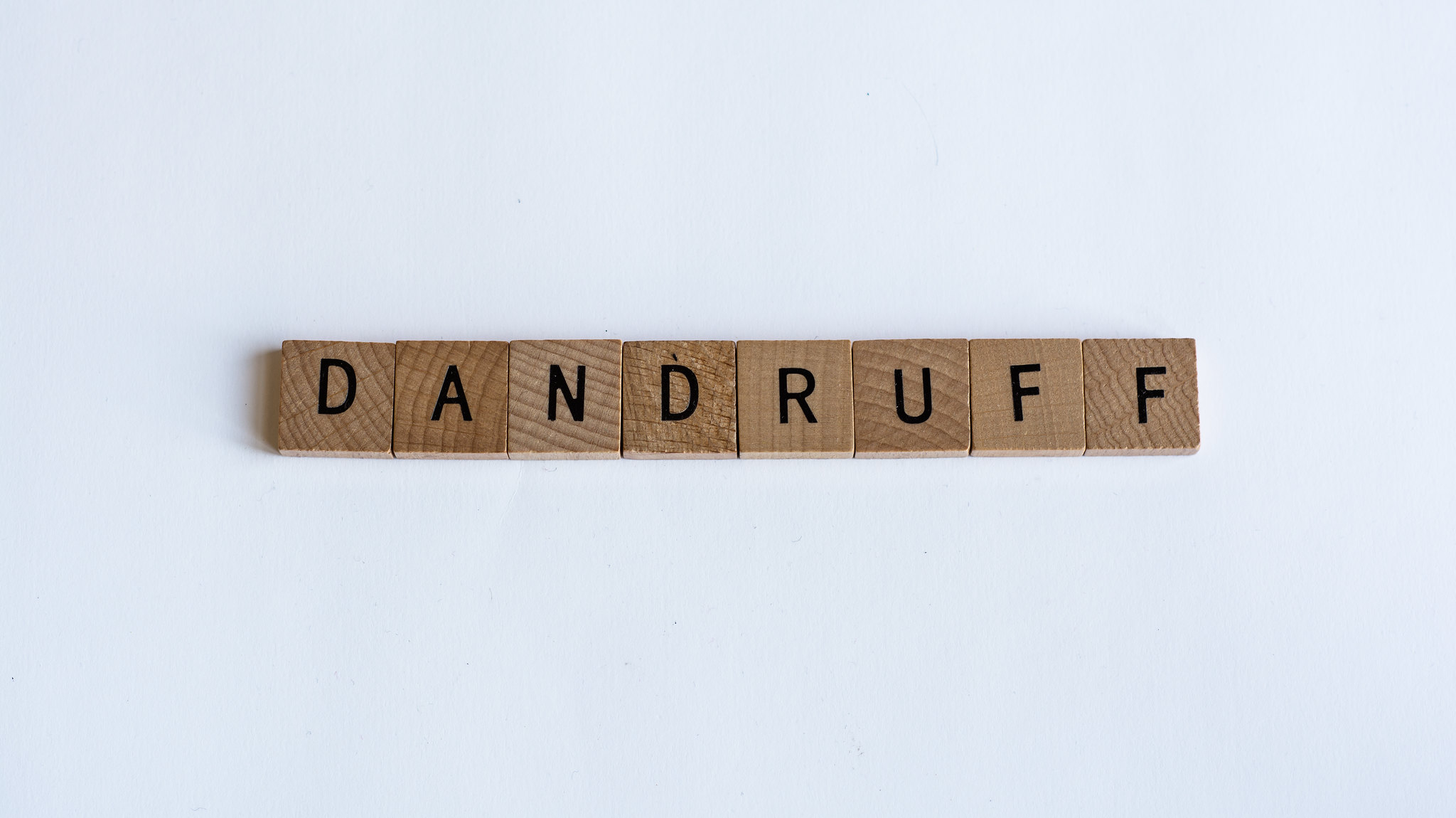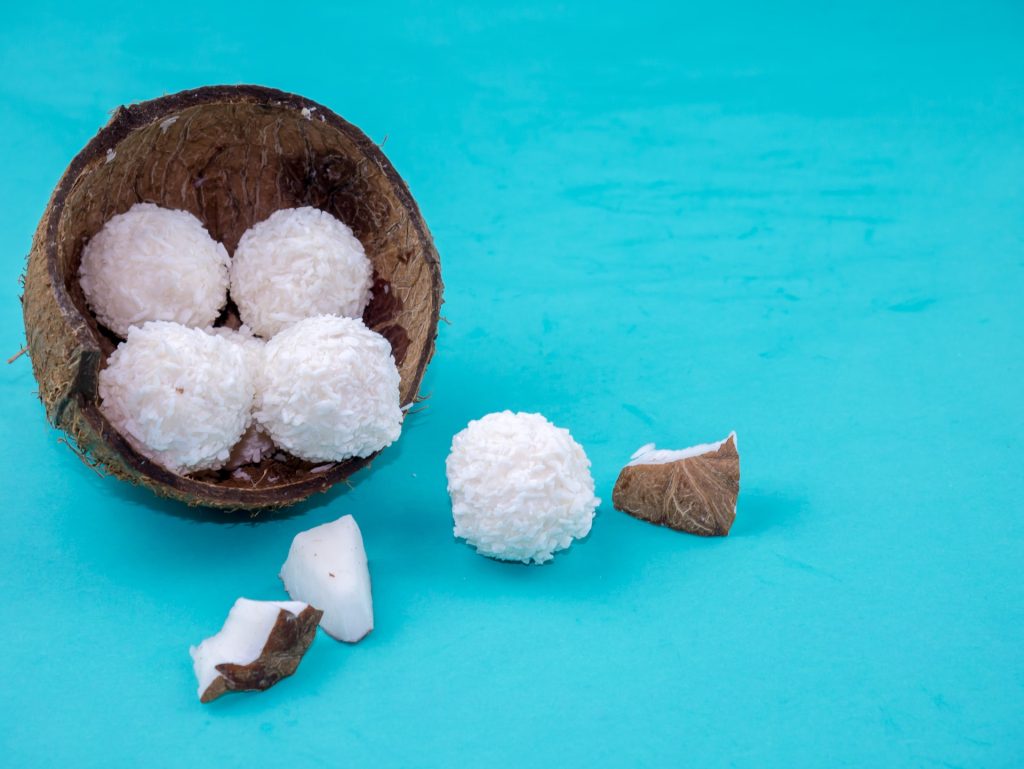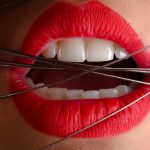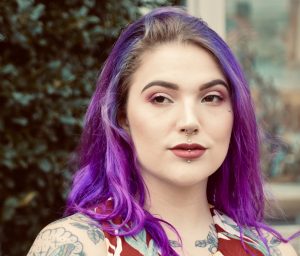
Dandruff affects over 50% of all adults. Most of us have experienced pesky white or yellowish flakes and an itchy or uncomfortable scalp. We’ll delve into the world of big dandruff flakes, from its causes and implications to effective management strategies, making it essential reading for those who value self-confidence, scalp well-being, and the dispelling of dandruff myths.
If you’re looking for insights into big dandruff flakes and their significance, or if you’ve been seeking practical tips to prevent and manage this condition, you’ve come to the right place. So, join us on this journey to healthier scalps, greater confidence, and the empowerment that comes from understanding and addressing dandruff.
Key Takeaways
- Dandruff Basics: Dandruff is a common scalp condition characterized by the shedding of dead skin cells, resulting in visible white or yellowish flakes, often accompanied by an itchy scalp.
- Importance of Understanding Dandruff: Understanding dandruff is essential for personal comfort, maintaining hair and skin health, minimizing social and psychological impact, and dispelling misconceptions associated with it.
- Big Dandruff Flakes: Larger dandruff flakes can indicate excessive scalp shedding, chronic inflammation, or thicker sebum buildup, providing insights into the severity of the condition.
- Susceptibility to Big Flakes: People with oily skin, older individuals, those with certain skin conditions like psoriasis or eczema, and individuals experiencing high-stress levels are more susceptible to experiencing larger dandruff flakes.
- Causes of Dandruff: Dandruff can result from a dry scalp, excessive oil production, yeast overgrowth (Malassezia), and an imbalance in the scalp’s microbial ecosystem.
- Significance of Dandruff Flakes: Dandruff flakes primarily consist of dead skin cells, with larger flakes often indicating more severe dandruff, impacting self-esteem, and potentially being linked to other scalp conditions.
- Prevention and Management: Proper scalp hygiene, anti-dandruff products, dietary considerations, and home remedies like tea tree oil can help manage dandruff. Treatment options for big flakes include specialized shampoos, scalp hydration, anti-fungal treatments, and lifestyle adjustments.
What is Dandruff?
Dandruff is a common scalp condition characterized by the shedding of dead skin cells from the scalp. These skin cells, which are typically small and barely visible, clump together and become visible as white or yellowish flakes. While dandruff itself is not a serious medical condition, it can be bothersome due to its effects on the scalp and hair. Here are some key points to consider:
- Flakes: Dandruff flakes vary in size but are usually small, measuring a few millimeters in diameter. They can be easily noticeable on dark-colored clothing and can sometimes fall onto the shoulders, causing embarrassment.
- Itching: Dandruff is often accompanied by an itchy scalp, which can be uncomfortable and frustrating.
- Appearance: In most cases, dandruff appears as small, fine flakes. However, in some instances, dandruff flakes can become larger and more visible, leading to concerns about appearance and scalp health. These larger flakes are what we refer to as “big dandruff flakes.”
Importance of Understanding Dandruff Care
Understanding dandruff is crucial for several reasons:
- Personal Comfort: Dandruff can be uncomfortable and embarrassing due to the visible flakes and scalp itchiness. Understanding its causes and management can help individuals find relief.
- Hair and Skin Health: Dandruff may be a symptom of an underlying scalp issue. Identifying and addressing dandruff can lead to healthier hair and scalp.
- Social and Psychological Impact: Dandruff can affect self-esteem and social interactions. Knowledge about dandruff can help reduce the stigma associated with it.
- Preventing Misconceptions: Understanding dandruff as a common scalp condition can dispel myths and misconceptions, such as linking it to poor hygiene.
Big Chunks of Dandruff Flakes
While dandruff flakes can vary in size, focusing on the largest ones can offer insights into the condition’s severity and underlying causes. Very large dandruff flakes over 3 mm may indicate:
- Excessive Scalp Shedding: When dandruff flakes are larger, it may suggest a higher rate of skin cell turnover on the scalp, leading to increased shedding.
- Chronic Inflammation: In some cases, the presence of larger flakes may be associated with chronic scalp inflammation, which can exacerbate dandruff symptoms.
- Thicker Sebum Buildup: Larger flakes can be the result of thicker sebum (natural scalp oil) buildup, which can trap dead skin cells, making them clump together.
Who is Susceptible to Big Dandruff Flakes?
Not everyone with dandruff experiences big flakes; in some cases, flakes may be more prominent due to certain factors. Here’s a closer look at who is susceptible to experiencing larger and more noticeable dandruff flakes:
- Skin Type: People with oily skin are more prone to dandruff, which may manifest as larger flakes due to the mixture of oil and dead skin cells. Oily skin provides an ideal environment for yeast growth, leading to larger, oilier flakes.
- Age: Dandruff is more common in adolescents and adults. It can become more noticeable as people age. In older individuals, larger flakes may occur due to various factors, including hormonal changes and the natural aging of the scalp.
- Certain Conditions: Some underlying skin conditions, such as psoriasis or eczema, can lead to more severe dandruff and larger flakes. These conditions can cause increased shedding of skin cells and inflammation, resulting in larger and thicker dandruff flakes.
- Stress: High stress levels can exacerbate dandruff and lead to larger flakes. Stress triggers the release of certain hormones and substances that can impact the scalp’s health and contribute to the development of dandruff.
What Causes Dandruff?
Dandruff can be attributed to several factors, and it’s essential to understand the root causes to effectively address and manage the condition. The key causes of dandruff include:
- Dry Scalp: A common cause of dandruff is a dry scalp. When the scalp loses moisture, it can become flaky and itchy. In cases of dry scalp, the flakes tend to be smaller and lighter in color. The lack of moisture can lead to skin cells shedding more rapidly than usual.
- Excessive Oil Production: On the other hand, an overly oily scalp can also lead to dandruff. Excessive oil, called sebum, can mix with dead skin cells and create an environment that encourages the growth of yeast. This yeast, known as Malassezia, is a common component of the scalp’s microbiome. When it multiplies excessively, it can irritate the scalp and lead to dandruff.
- Yeast Overgrowth: Malassezia, as mentioned, is a naturally occurring yeast on the scalp. It usually coexists without causing problems. However, when it multiplies excessively, it can irritate the scalp and lead to dandruff. This overgrowth can trigger an inflammatory response, causing the skin cells on the scalp to shed at an accelerated rate.
- Microbial Imbalance: Dandruff can also result from an imbalance of the scalp’s microbial ecosystem. When the balance of beneficial and harmful microorganisms is disrupted, it can lead to an environment conducive to dandruff development.
Understanding Dandruff Flakes
- Composition of Dandruff Flakes: Dandruff flakes primarily consist of dead skin cells. These cells are made up of a protein called keratin. In addition to dead skin cells, dandruff flakes may contain fungal elements, such as Malassezia yeast, which can contribute to the flaking and itching associated with dandruff.
- Size and Thickness Variation: Dandruff flakes can vary in size and thickness. Smaller flakes are often less noticeable and may be more evenly distributed throughout the scalp. Larger and thicker dandruff flakes are typically a result of clumped or compacted dead skin cells and may be more visible on the hair and clothing.
- Connection to Scalp Health: The presence of dandruff flakes can be an indicator of scalp health. A healthy scalp sheds dead skin cells gradually, while an unhealthy scalp may exhibit excessive flaking. Dandruff can be influenced by factors like fungal overgrowth, sebum production, and underlying skin conditions. Understanding the connection between dandruff flakes and scalp health is essential for effective management.
The Significance of Large Dandruff Flakes
- Indicators of Severe Dandruff: Large dandruff flakes are often indicative of more severe dandruff. When flakes are notably large and thick, it suggests an elevated rate of skin cell turnover and the accumulation of dead skin cells on the scalp. This may be associated with chronic dandruff and increased discomfort.
- Impact on Self-Esteem and Confidence: The presence of large dandruff flakes can have a substantial impact on an individual’s self-esteem and confidence. The visibility of these flakes on the hair and clothing can lead to embarrassment and reduced self-assurance. Understanding the significance of large flakes underscores the importance of effective dandruff management for one’s overall well-being.
- Potential Link to Scalp Conditions: Large dandruff flakes may not only be a symptom of dandruff but can also be linked to other scalp conditions. Conditions such as psoriasis and seborrheic dermatitis can manifest with thick, scaly plaques on the scalp, which may be mistaken for dandruff. Accurate diagnosis is essential to determine the underlying cause and receive appropriate treatment.

Factors Contributing to the Formation of Large Dandruff Flakes
Scalp Hygiene and Care
- Sebum Accumulation: Inadequate scalp hygiene, such as infrequent washing or improper cleaning, can lead to the accumulation of sebum and dead skin cells on the scalp. This buildup provides a favorable environment for Malassezia and the formation of large dandruff flakes.
Skin Conditions and Disorders
- Seborrheic Dermatitis: This skin condition can cause red, itchy, and scaly patches on the scalp. It often leads to thicker and more substantial dandruff flakes due to the underlying inflammation and increased skin cell turnover.
Diet and Lifestyle Factors
- High Sugar and Fatty Foods: Some research suggests that diets rich in sugars and saturated fats may contribute to dandruff by promoting the growth of Malassezia on the scalp. An unhealthy diet can indirectly lead to the formation of large flakes.
Prevention and Management
Proper Scalp Hygiene:
- Regular Shampooing: Maintaining good scalp hygiene through regular and thorough shampooing can help prevent the accumulation of sebum and dead skin cells, reducing the formation of large dandruff flakes.
Anti-Dandruff Products
- Antifungal Shampoos: Shampoos containing active ingredients like ketoconazole, zinc pyrithione, or selenium sulfide can effectively control dandruff by reducing the growth of Malassezia and promoting a healthier scalp.
Dietary Considerations
- Balanced Diet: Consuming a balanced diet rich in essential nutrients, including vitamins and minerals, can promote scalp health. Omega-3 fatty acids found in foods like fatty fish can help reduce inflammation and potentially minimize dandruff.
Home Remedies for Dandruff
- Tea Tree Oil: Some individuals find relief from dandruff using tea tree oil, which has antimicrobial properties. Diluted tea tree oil can be applied to the scalp as a home remedy.
Treatment Options for Big Dandruff Flakes
Treatment for dandruff, including cases with big flakes, focuses on managing the underlying causes and reducing symptoms. Here are some of the common treatment options:
- Shampooing: Regular and gentle shampooing is key to controlling dandruff. Look for shampoos specifically formulated to combat dandruff. These shampoos often contain active ingredients like:
- Zinc Pyrithione: This ingredient helps to control the growth of yeast on the scalp.
- Selenium Sulfide: It reduces cell turnover and the growth of Malassezia yeast.
- Ketoconazole: An antifungal agent that can be effective in treating dandruff.
- Coal Tar: Coal tar shampoos can slow down the shedding of skin cells and reduce flaking.
- Scalp Hydration: For those with dandruff caused by a dry scalp, using a moisturizing conditioner in addition to the anti-dandruff shampoo can help keep the scalp hydrated.
- Anti-Fungal Treatments: In cases where dandruff is caused by an overgrowth of Malassezia yeast, healthcare providers may recommend prescription-strength antifungal shampoos or topical treatments.
- Topical Steroids: For individuals with severe dandruff or underlying skin conditions like psoriasis, topical corticosteroids can help reduce inflammation and itching.
- Lifestyle Adjustments: It’s essential to maintain a healthy scalp by following good hair care practices. This includes avoiding excessive use of hair products, eating a balanced diet rich in essential nutrients, and managing stress, which can worsen dandruff.
- When to See a Healthcare Provider: If dandruff persists or worsens despite over-the-counter treatments, it’s advisable to consult a dermatologist or healthcare professional. It’s also essential to seek medical advice if you experience severe redness, swelling, or open sores on the scalp, as these may indicate a more serious condition that requires medical attention.
Lifestyle and Prevention Tips
Stress Management
- Stress Hormones and Dandruff: Chronic stress can trigger the release of stress hormones, which may affect the immune response in the scalp. This can potentially exacerbate dandruff symptoms. Practicing stress management techniques such as meditation, yoga, or deep breathing exercises may help reduce the impact of stress on dandruff.
Healthy Hair Care Practices
- Proper Brushing: Using a soft brush to gently remove loose flakes can be beneficial. Avoid vigorous or frequent brushing, as it can irritate the scalp.
- Avoiding Harsh Chemicals: Limit the use of harsh hair products that can strip the scalp of its natural oils. Opt for mild, sulfate-free shampoos and conditioners.
- Scalp Massage: Gentle scalp massages can stimulate blood flow and help distribute sebum evenly, promoting a healthier scalp environment.
Building Confidence and Self-Esteem
- Knowledge and Acceptance: Understanding that dandruff is a common and treatable condition can help build confidence. Accepting it as a normal part of scalp health is the first step.
- Personal Care: Maintaining good personal hygiene and using effective dandruff treatments can boost self-esteem by reducing the visible symptoms of dandruff.
- Seeking Support: Sharing experiences and concerns with friends, family, or support groups can provide emotional support and increase self-confidence.
Final Thoughts
Big dandruff flakes, while less common, are a manifestation of a common scalp condition that can be both distressing and uncomfortable. The key to managing dandruff, regardless of the size of the flakes, lies in understanding its causes, choosing the right treatments, and making necessary lifestyle adjustments.
By following good hair care practices and seeking professional guidance when needed, individuals can effectively address dandruff and promote a healthy scalp. Remember, while dandruff may be bothersome, it is a manageable condition that can be successfully treated.
FAQs
- Q: What is dandruff, and what causes it?
- A: Dandruff is the shedding of dead skin cells from the scalp. It can be caused by factors like dry scalp, excessive oil production, yeast overgrowth, and microbial imbalances in the scalp.
- Q: What are the common signs and symptoms of dandruff?
- A: Common symptoms include small, white or yellowish flakes, an itchy scalp, and sometimes, larger and more visible dandruff flakes.
- Q: Why do some people experience big dandruff flakes?
- A: Susceptibility to larger dandruff flakes can be influenced by factors like skin type, age, underlying skin conditions, and stress levels.
- Q: How can dandruff impact an individual’s self-esteem and confidence?
- A: Dandruff, especially when it results in large and visible flakes, can lead to embarrassment and reduced self-assurance, impacting an individual’s overall well-being.
- Q: What are the key causes of big dandruff flakes?
- A: Large dandruff flakes can be caused by factors like excessive scalp shedding, chronic inflammation, and thicker sebum buildup on the scalp.
- Q: What are some effective treatment options for big dandruff flakes?
- A: Treatment options include specialized anti-dandruff shampoos, scalp hydration, anti-fungal treatments, topical steroids for severe cases, and lifestyle adjustments to maintain a healthy scalp.
- Q: When should I seek professional help for dandruff?
- A: If dandruff persists or worsens despite over-the-counter treatments, or if you experience severe redness, swelling, or open sores on the scalp, it’s advisable to consult a dermatologist or healthcare professional for guidance.
#Dandruff #ScalpHealth #BigFlakes #DandruffCauses #SkinCare #HairCare #HealthyScalp #DandruffTreatment #FlakeFree #SelfEsteem #StressManagement #SkinConditions #DandruffMyths #PreventionTips #DandruffRelief
Note: The information provided in this article is for educational purposes only and should not be taken as medical advice. For personalized health recommendations, it is always advisable to consult with a healthcare professional before incorporating any changes to your daily health routine.







No comment yet, add your voice below!